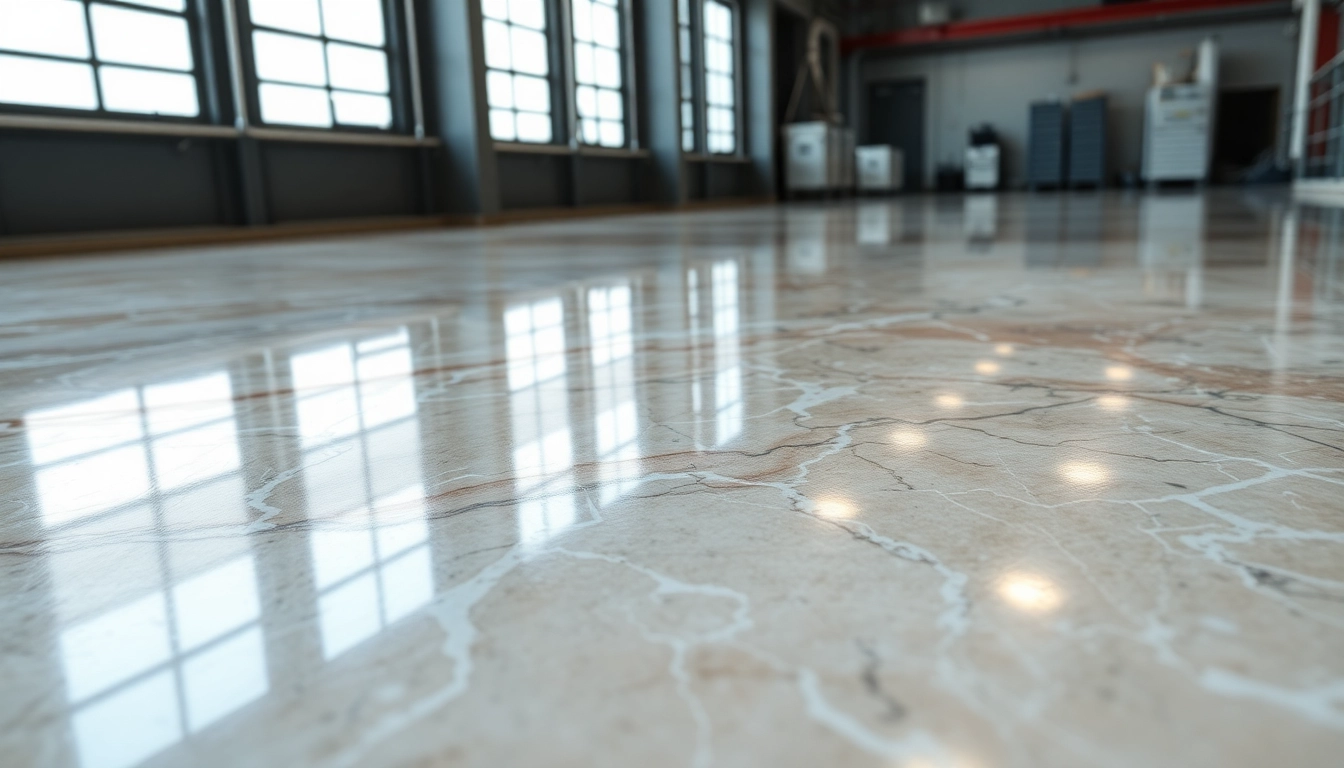Understanding Epoxy Resin Floors: Features and Benefits
Epoxy resin floors have become a top choice for both commercial and residential spaces due to their exceptional durability, aesthetic versatility, and ease of maintenance. Unlike traditional flooring options, epoxy resin creates a seamless, chemically resistant surface that withstands heavy foot traffic, chemicals, and impacts. Whether you’re considering upgrading your garage, kitchen, warehouse, or retail space, understanding the features and benefits of epoxy resin floors is essential for making an informed decision. Epoxy resin floor technology offers a versatile solution that combines practicality with design elegance.
Types of Epoxy Floors and Their Applications
Epoxy flooring comes in various formulations tailored for specific uses, ranging from decorative finishes to heavy-duty industrial surfaces. Here are the primary types:
- Self-Leveling Epoxy: Ideal for creating flat, smooth surfaces in garages, basements, and showrooms. It provides a glossy finish with a high degree of transparency or color brilliance.
- Epoxy Mortar Floors: Designed for industrial settings requiring high impact and abrasion resistance. These are thick, robust overlays suitable for warehouses or factories.
- Quartz or Decorative Epoxy: Incorporates decorative flakes, stones, or pigments for aesthetic appeal. Popular in retail spaces, commercial kitchens, and home interiors.
- Anti-slip Epoxy: Features textured surfaces for safety, often used in wet or high-traffic areas such as pools, outdoor patios, or commercial kitchens.
Each type meets different application demands, emphasizing the importance of selecting the right formulation for longevity and performance.
Advantages of Epoxy Resin Flooring in Commercial and Residential Spaces
Epoxy floors offer numerous advantages that make them a preferred choice for diverse environments:
- Durability: Epoxy coatings can withstand heavy machinery, constant foot traffic, and chemical spills without deterioration, making them suitable for industrial and high-use areas.
- Seamless and Hygienic: The continuous surface eliminates cracks and joints, minimizing dirt accumulation and simplifying cleaning routines—crucial for healthcare, food processing, and cleanroom facilities.
- Aesthetic Flexibility: With an array of colors, finishes, and decorative effects—including marble look and metallic finishes—epoxy floors can be customized to match any interior style.
- Cost-Effectiveness: Long-lasting and low-maintenance, epoxy floors reduce replacement and upkeep costs over their lifespan, providing excellent value in both commercial and residential settings.
- Resistance to Chemicals and Stains: Especially beneficial in laboratories, factories, and garages where exposure to oils, solvents, or acids is common.
Common Challenges and How to Overcome Them
Despite its advantages, epoxy flooring can present challenges if not properly applied or maintained. Common issues include:
– Surface Preparation Problems: Inadequate cleaning or roughness can lead to adhesion failure.
– Yellowing and Discoloration: Exposure to UV light can cause some epoxy formulations to yellow.
– Cracking or Delamination: Resulting from improper curing or substrate movement.
Appropriate surface preparation—including grinding, cleaning, and priming—is critical for optimal adhesion. Using UV-resistant epoxy formulations or sealants can prevent yellowing, while controlled curing environments mitigate cracking risks. Hiring experienced installers ensures that application standards are met, and post-installation maintenance prolongs the lifespan of your floor.
Design Trends and Aesthetic Options for Epoxy Resin Floors
Marble Look and Metallic Finishes
Modern epoxy technology allows for high-end aesthetics such as marble effects and metallic finishes. These styles use color pigments, metallic powders, and specialized techniques to mimic luxurious surfaces, providing sophisticated interiors for showrooms, upscale retail outlets, and residential kitchens.
Color Customization and Decorative Flakes
Color options are virtually limitless, ranging from classic neutrals to bold hues. Incorporating decorative flakes or quartz adds texture and depth, allowing you to customize your space with patterns, branding, or personal preferences. This not only enhances visual appeal but also improves slip resistance.
Creating a Seamless, Professional Finish
When properly installed, epoxy floors are seamless, creating a sleek and uniform surface. Techniques such as trowel or roller application, combined with high-quality resins, ensure a professional, polished look that elevates the overall ambiance of your space.
Step-by-Step Process for Installing a Durable Epoxy Floor
Preparing Your Surface for Optimal Results
Surface preparation is foundational to a successful epoxy application. It involves cleaning thoroughly to remove dust, grease, and loose particles, followed by mechanical grinding or shot blasting to open up the surface for better adhesion. Repairing cracks or uneven areas ensures a flat, stable base.
Choosing the Right Resin and Application Techniques
Selecting a high-quality epoxy resin suited to your environment and aesthetic goals is crucial. Typically, a two-part epoxy system is mixed according to manufacturer instructions. Application methods include pouring for self-leveling floors, rolling, or troweling for textured finishes. Proper environment control—temperature and humidity—is vital during application to prevent defects.
Drying, Curing, and Maintenance Tips
The curing process usually takes from 24 to 72 hours, depending on the product and conditions. During this period, avoid foot traffic or placing objects on the surface. Post-curing, applying sealants or topcoats enhances longevity. Regular cleaning with mild detergents and avoiding abrasive tools ensures the floor maintains its appearance and functionality.
Performance Metrics and Maintenance of Epoxy Resin Floors
Assessing Durability and Wear Resistance
Epoxy floors should resist scratches, stains, and chemical attacks over time. Performance can be monitored through surface inspections, checking for discoloration, cracking, or delamination. High-quality epoxy formulations with UV stabilizers and impact modifiers enhance durability.
Cleaning and Long-Term Care Strategies
Routine cleaning involves sweeping or vacuuming to remove debris, with periodic mopping using pH-neutral cleaners. Promptly cleaning spills reduces stain risks. Protective mats and furniture pads minimize surface scratches in residential settings.
When to Recoat or Refurbish Your Epoxy Floor
Recoat intervals depend on usage, environmental exposure, and maintenance. Typically, high-traffic industrial floors may require new coats every 3-5 years, while decorative residential floors might last longer. Signs such as fading, gloss loss, or surface wear indicate it’s time for refurbishment.
Cost Considerations and Choosing the Best Suppliers
Estimating Budget and Cost-Effective Solutions
The cost of epoxy flooring varies based on size, complexity, resin type, and finish options. A standard DIY kit may start around £60, while professional installations in large commercial spaces can reach several thousand pounds. Proper planning and selecting the right product for your needs ensure cost-effectiveness without compromising quality.
Factors Influencing Price and Quality
- Surface Preparation Requirements
- Type and Thickness of Epoxy Layer
- Design and Decorative Elements
- Guarantees and Installation Expertise
Trusted Brands and Procurement Tips
Reliable suppliers such as Stone Coat Epoxy, EPODEX, and Sherwin-Williams offer reputable products with proven performance. Always verify product specifications, seek samples or case studies, and opt for vendors providing comprehensive support and guarantees.



